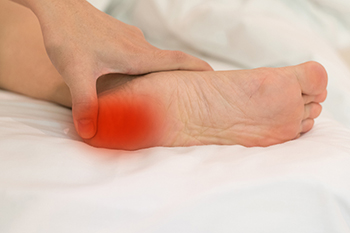
A condition known as Sever’s disease is common among physically active children between the ages of 8 and 14. Luckily it is not really a disease and generally corrects itself as the child ages. However, in the meantime, the child may experience pain in the heel, but not the Achilles tendon or plantar fascia. Also known as calcaneal apophysitis, Sever’s disease results from inflammation of the growth plate at the back of the heel. This is because the muscles of the calf and the heel bone grow at different rates. Excessive running or jumping, particular to certain sports played by children, can aggravate the condition. Pain is worse during activity and generally lets up after rest. Another factor of Sever’s disease is wearing shoes that do not offer ample heel cushioning or arch support. By late adolescence, the child’s growth plates will have hardened and the pain abates. For more information, it is suggested that your child see a podiatrist who can examine the heel to properly diagnose the problem and offer options for treatment.
Sever's disease often occurs in children and teens. If your child is experiencing foot or ankle pain, see Dr. Odin De Los Reyes from Connecticut. Our doctor can treat your child’s foot and ankle needs.
Sever’s Disease
Sever’s disease is also known as calcaneal apophysitis, which is a medical condition that causes heel pain I none or both feet. The disease is known to affect children between the ages of 8 and 14.
Sever’s disease occurs when part of the child’s heel known as the growth plate (calcaneal epiphysis) is attached to the Achilles tendon. This area can suffer injury when the muscles and tendons of the growing foot do not keep pace with bone growth. Therefore, the constant pain which one experiences at the back of the heel will make the child unable to put any weight on the heel. The child is then forced to walk on their toes.
Symptoms
Acute pain – Pain associated with Sever’s disease is usually felt in the heel when the child engages in physical activity such as walking, jumping and or running.
Highly active – Children who are very active are among the most susceptible in experiencing Sever’s disease, because of the stress and tension placed on their feet.
If you have any questions, please feel free to contact our offices located in Southbury and Farmington, CT . We offer the newest diagnostic and treatment technologies for all your foot and ankle injuries.
